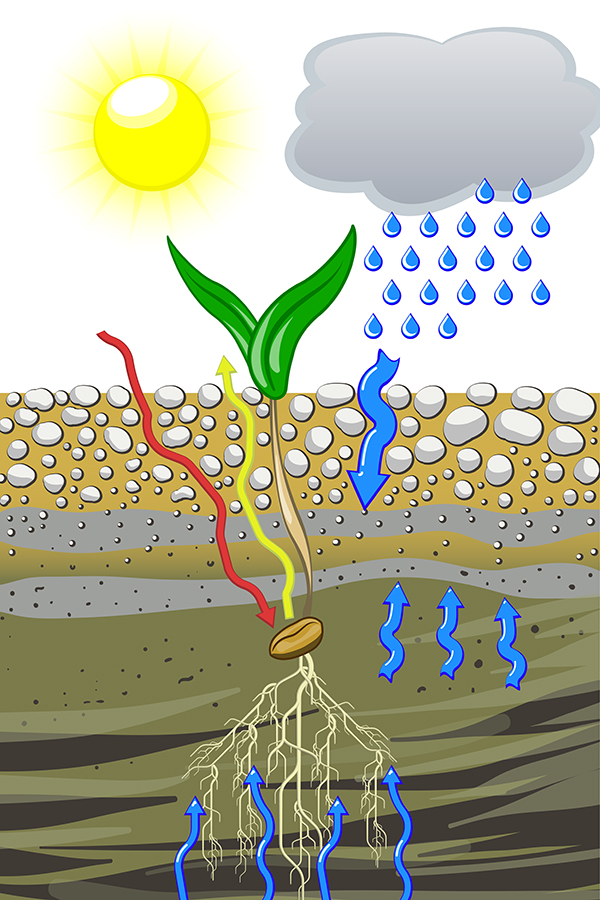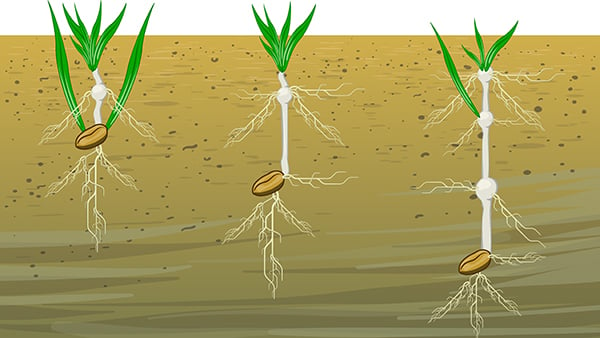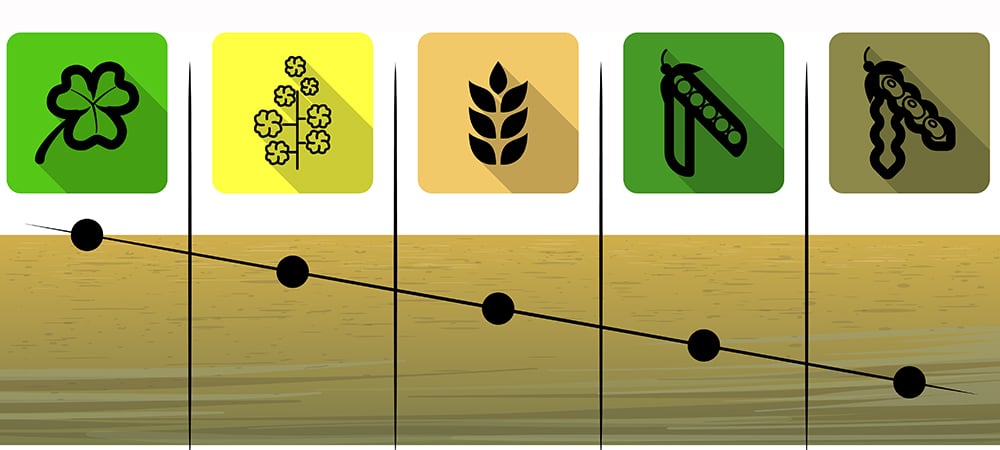The ideal seedbed
The most important properties of the seedbed are to:
- absorb heavy rain, providing stability against crusting and erosion
- act as a barrier to evaporation
- provide capillary water transport for germinating seeds
- act as a nutrient, water and oxygen reserve, promote root development
The ideal seedbed should have the appearance shown in the picture with, starting from the top, a layer of coarser aggregates, including organic material, that protects against crust formation, followed by a layer of finer aggregates that prevent soil moisture from evaporating off and create good contact between seed and soil.
Water is transported to the germinating seed through capillary transport from below, which requires good contact between seed and soil. On light soils, but also on heavy clay soils, this capillary transport of water is weak and it is particularly important to utilise the moisture that is present in the soil from the start.





